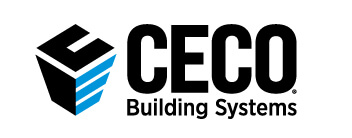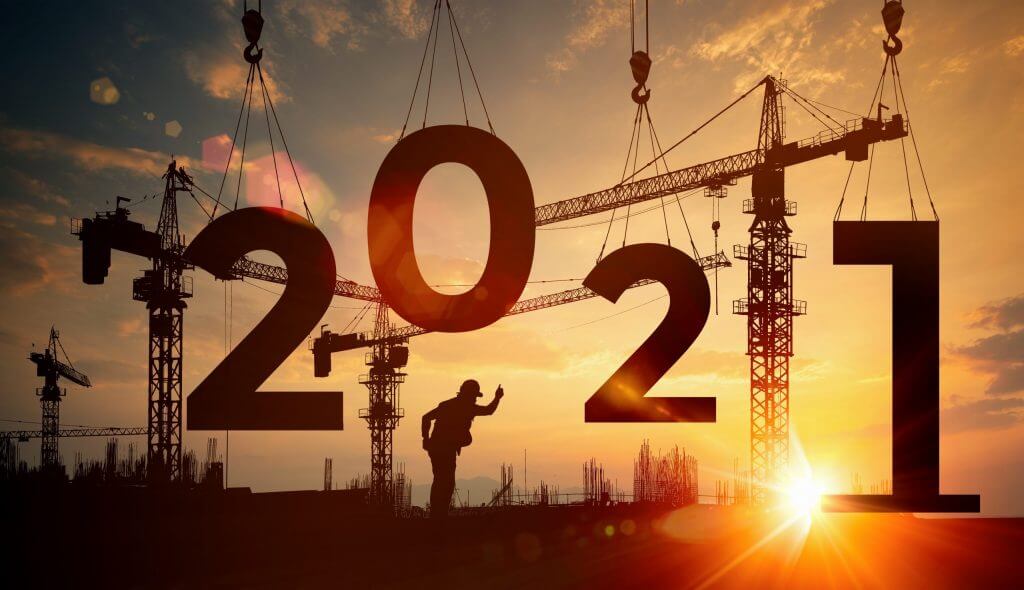What’s Next for the Metal Building Industry?
Posted on January 7, 2021 by Ceco Building SystemsThe year 2020 has demonstrated that sometimes the only thing predictable is that things can be quite unpredictable. Nonetheless, we can look back at what has been happening and trend forward. Looking around at the general economy and the metal building industry, we have developed a list of current trends that may give us a glimpse into life in 2021 or longer:
1. Modular Construction: With a completion rate that can be 20-50% faster, lower construction costs, and a significant reduction in errors and waste, it is no surprise than more builders are choosing modular construction. The optimized fabrication processes used in modular construction also cuts down on the 135 million tons of construction and demolition waste each year.
2. Autonomous Machines: We’ve all heard that self-driving cars will be a sure thing in the future, but what about automated machinery on construction sites? It is happening – and at faster rates than those built for the road.
3. Electric Commercial Vehicles: Just by switching to battery-electric machinery, the construction industry could reduce its emissions by as much as 95%. Improved charging solutions that reduce downtime – which has been one of the greatest barriers to switching – are making the transition an easier choice for many companies.
4. Device Communication: It is not just phones and computers at the office. Increasingly, large, and small construction equipment is wired to interact and communicate – keeping efficiency at a maximum, helping to improve safety and streamlining costs.
5. Wider use of Renewable Biofuels: While California is the only state so far to subsidize companies who make the switch to sustainable fuels, more construction professionals across the country are giving up diesel as a source for powering equipment. The trend could help significantly reduce the carbon footprint of the industry.
6. Green Construction: The “green” movement has become so popular that Leadership in Energy and Environmental Design (LEED) is now certifying 2 million square feet (about twice the area of Chicago’s Millennium Park) of construction space across the world every day. Commercial office spaces claim the largest portion of the green building market, with just over 20%.
7. Public and Commercial Facilities as Green Building Leaders: As industrial expansion increases, commercial buildings are leading the way in green building initiatives. This trend is reflected not only in the US but throughout Asia and Europe, with builders implementing innovative solutions such as green roofs, living walls, passive solar design, recycled and sustainable insulation, DC power, and plant-based materials.
8. Increased Green Building in China: In recent years, China has inched past the US in sustainable construction with more than 300 million square meters (about the area of Athens, Georgia) of green buildings throughout the country. In general, China moves about two times as fast as the US in implementing green building initiatives – and they are expected to have more than half of the world’s global green building floor space by 2021.
9. More BIM Dimensions: As technology moves toward 4D, 5D and even 6D capabilities, companies will be able to vastly improve estimating and planning processes through improved access to data. With the ability to see geothermic, thermal, and acoustic properties, builders can be more proactive in planning and even use the information to determine how these properties will affect a building before construction begins.
10. Cloud-Based BIM: Moving Building Information Modeling to a cloud platform rather than on-premises installation makes information available to all involved parties in real time. Communication is more efficient throughout every phase of construction, with increased response time and greater ability to respond to urgent situations quickly.
11. Collaboration Through Business Information Modeling (BIM): A company that embraces BIM also enables improved communications at every level. BIM enables teams to work seamlessly, regardless of where they are: those in the office can communicate with those on the site and even those in another city or country, and not just via phone, email, or text, but graphically and interactively. Enhanced communication helps reduce completion times and job costs while improving overall quality.
12. Increased Use of 3D Printing: At a time when construction workers are in short supply, 3D printing is helping to fill some of the gap by automating many of the tasks that are typically done manually. The benefits are not just limited to supplementing labor, though. 3D printing uses only the materials needed to print a structure, virtually eliminating waste, and thereby reducing costs. And 3D printers can work around the clock, enabling faster turnaround and job completion times.
13. Augmented and Virtual Reality: A major benefit of these technologies in the construction industry is the ability to identify weak points in a structure before allowing workers on the site – vastly improving safety and reducing accidents. Additionally, with the use of remote-controlled machinery operated from off-site locations, progress on a job can continue when inclement weather conditions might otherwise halt productivity or increase risk of accidents.
14. Increased Use of Artificial Intelligence (AI): An increasing number of companies are looking to AI for its promise of increasing efficiency throughout the entire construction process – from materials production to design, planning and implementation. There are also many opportunities to use AI to streamline the distribution process, simplify price forecasting, and optimize the transport planning of a job – all factors in reducing the time and cost of a project.
15. Drones: They have been used increasingly frequently to gain visibility into progress on job sites and are now being used as a more proactive method to spot potential issues before construction begins.
16. Smart Cities: The urban planners of construction and engineering teams are working together with city leaders more to collaboratively transform cities into “smart” cities. A smart city has strategies for increasing the sustainability of their communities and for ensuring those communities are built for resiliency during challenging times.
17. Lower Profitability: One of the less positive trends in the industry is a decrease in the profitability of construction projects in the US. The shift is due to several factors, including increased competition in Asia, greater complexity of projects, and growing supply chain issues. To compensate for the losses, many companies are working diligently on improving their project management processes.
18. Regulation-Driven Price Increases: The number of building codes nationwide has increased by 10% in recent years – which inevitably drives up the cost of construction. Many professionals are convinced the new codes and changes are not necessary and do not lead to any productive result, leading to an overall sense of frustration within the industry.
19. Shortage of Hourly Workers: With a nationwide labor shortage that has continued for the past decade, construction companies struggle daily with having to limit the number of projects they can take on and increase the time it takes to complete the projects they do start. In response, many companies are finding they are increasingly dependent on prefabricated and modular materials, which require less hands-on time.
20. Construction Employment on The Rise: As stated above, the lack of craft workers has led to companies working harder to recruit employees, offering higher pay rates and more incentives.
21. Greater Awareness of Worker Safety: Increased regulations have also crossed over into areas concerning the safety of workers. Consequently, more construction companies are implementing technologically smart tools such as wearable trackers and even work boots with sensors. Devices allow supervisors to track locations of team members, let them know when workers are fatigued or injured, and much more.
Specific to the steel industry, here are some further observations:
22. Steel Consumption: Key industries continue their steel consumption at pre-COVID levels. The construction industry started strong in 2020 and remained so given it is deemed an “essential business” in most states. As building and infrastructure construction continues, so does the consumption of raw material used in rebar, framing, pipelines, and tracks.
23. Health Precautions and Mill Capacity: Due to the nature of COVID-19 and how it spreads person-to-person, government and health authorities have recommended that building operators and companies reduce the number of people confined within a space —in some cases to as low as 50 percent. The steel mills are no exception to this, putting further constraints on maximum capacity. This has directly affected lead times, extending them to historical highs and making late shipments quite common.
24. Mill Shutdowns: Given the extraordinary and costly effort required to upgrade mill facilities and equipment, enhancements to aging plants are planned many years in advance. These equipment upgrades require temporary shutdowns affecting industry supply of steel, and the risk associated with rescheduling a planned upgrade is prohibitive even if demand is strong.
25. Imports Slow: When domestic production is lacking, large steel consumers typically look to foreign suppliers to offset the supply shortage. However, given the global pandemic, mills around the world are facing the same general challenges with some political nuances sprinkled in. The United States has reduced the quota for Brazilian steel imports by 80 percent. Ferrous scrap prices have increased due to demand in Turkey, and Chinese and German prices have also risen very recently. The effort for steel consuming industries to source internationally is not for lack of trying—but the economics do not support it.
Looking ahead and given the supply challenges the steel industry is facing, prices will naturally rise until the supply curve intersects with the demand curve. This is the case across any steel-consuming industry which means continued inflation through the automotive, appliance and construction industries. Nonetheless, there is optimism that this is only short-term, pending the widespread availability of a COVID-19 vaccine. Unrelated to the pandemic, there is an unusually high amount of mill capacity scheduled to open in 2021. This brings hope that even if all other factors continue to put pressure on price, we will see some relief in the coming year and resume some semblance of normalcy.
In light of all the above, Ceco remains diligent and nimble to meet the evolving needs of building erectors, contractors, and architects. To find out more about how to stay competitive and in step with the current trends, contact your local Ceco representative.


